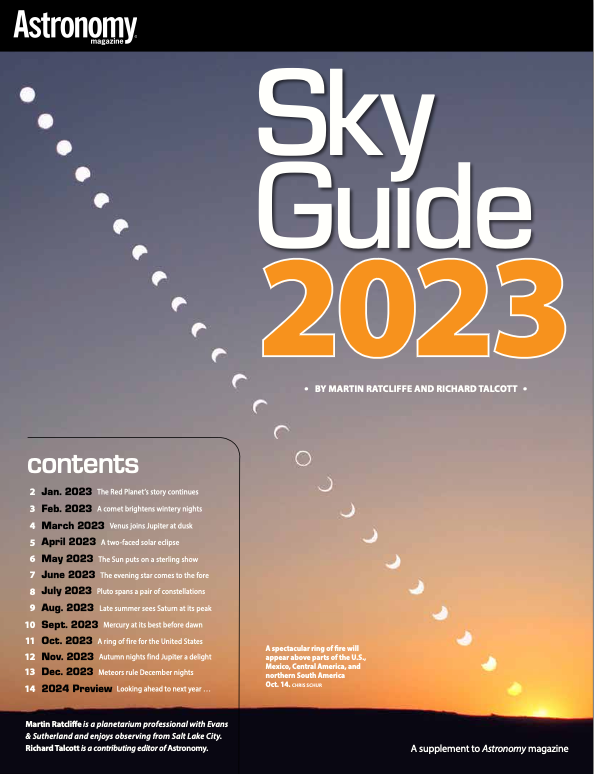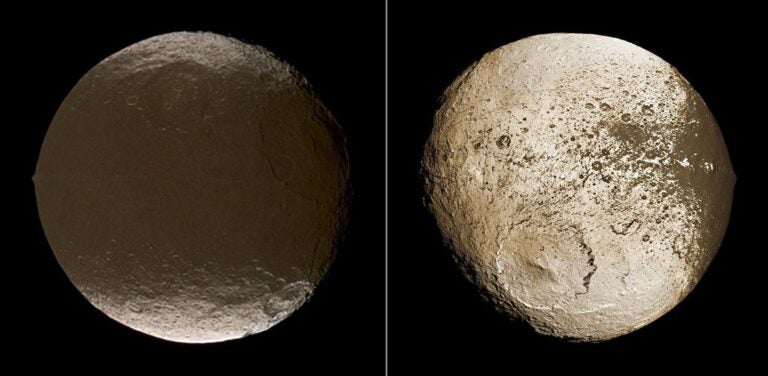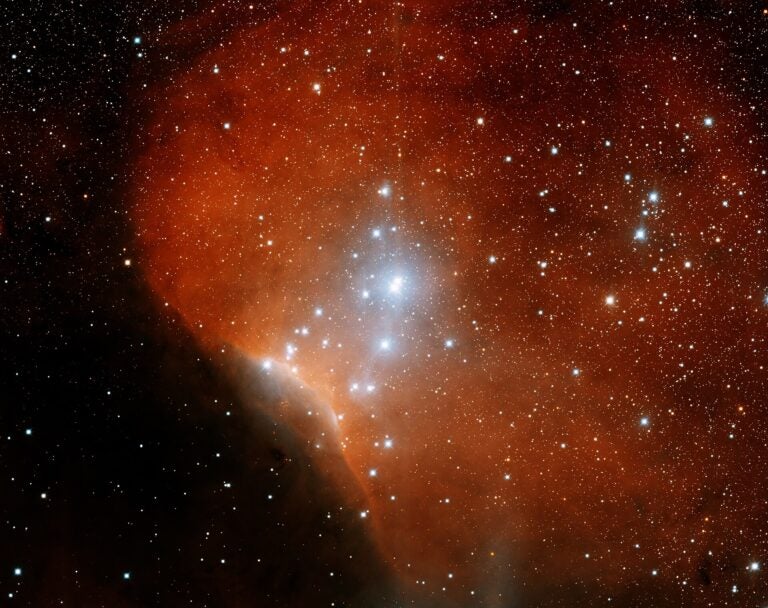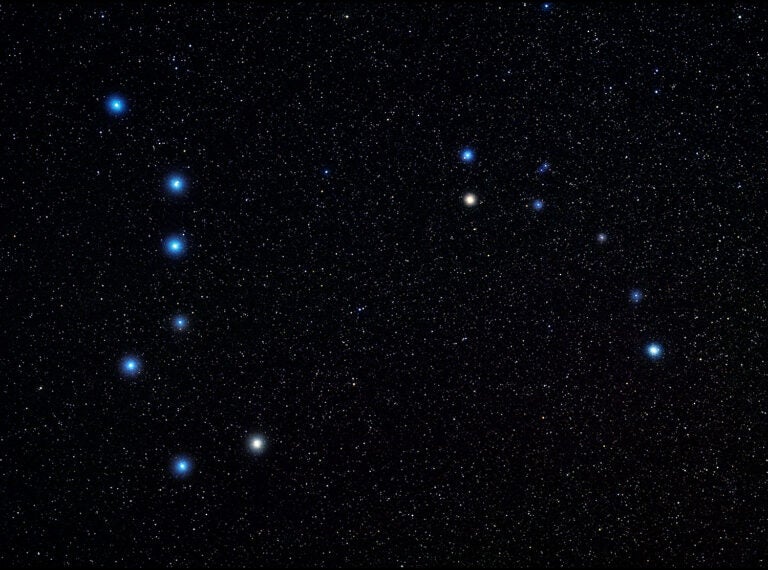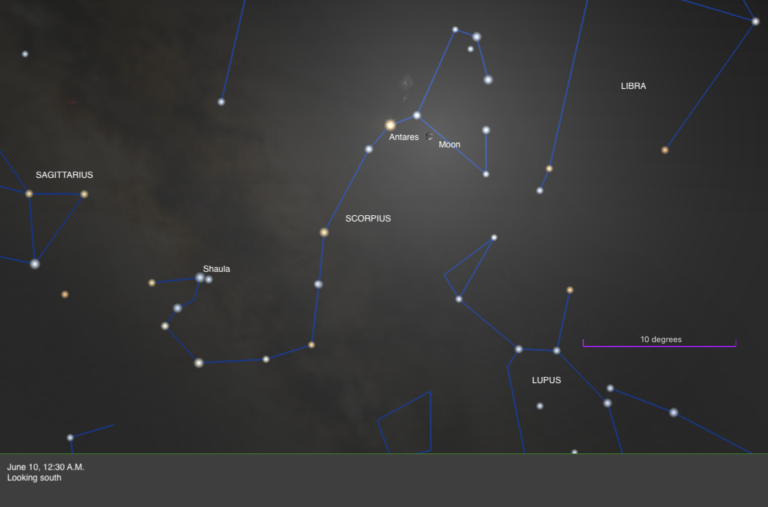Mars and Jupiter start 2023 as brilliant targets in the sky; Jupiter returns for an encore at opposition in early November. Saturn, too, looks spectacular through a telescope around its late August opposition. But Venus will steal the show, putting in a great evening appearance in spring and providing an equally stunning predawn performance in autumn.
Although January’s Quadrantids peak just two days before the Full Moon, August’s Perseid shower and December’s Geminid shower peak within three days of a New Moon, providing dark skies for the year’s best meteors. And as for comets, C/2022 E3 (ZTF) may rise to naked-eye brightness within the first few weeks of the year, reaching perihelion Jan. 12 as potentially 2023’s best comet — unless something unexpected comes along. Anything can happen!
There are two lunar eclipses and two solar eclipses in 2023. Luna undergoes a May 5 penumbral eclipse and an Oct. 28 slight partial eclipse, though neither is visible from North America. The Sun, as usual, steals the show. On April 20, observers at the ends of the central path in the Southern Ocean and southeast of the Marshall Islands will see an annular eclipse. Those in between will witness totality. Maximum eclipse occurs just south of the island of Timor and lasts 1 minute 16 seconds. The Oct. 14 annular eclipse crosses Oregon, Nevada, Utah, Arizona, New Mexico, and Texas before reaching Mexico, Central America, and northern South America. The stunning ring of fire will last more than four minutes everywhere on the center line in the U.S.

